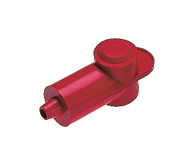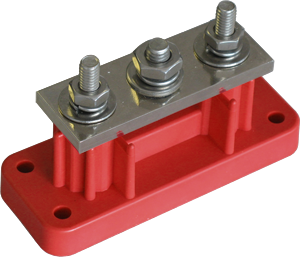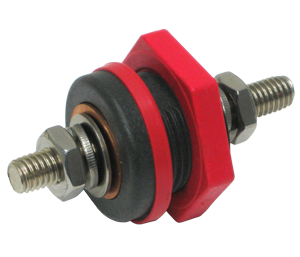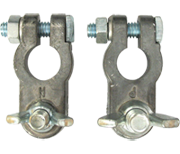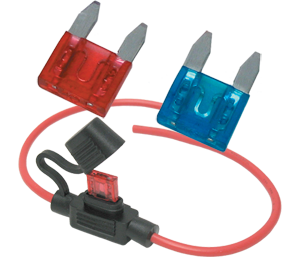Frequently Asked Questions
Why use VTE Inc. battery terminal insulators? View
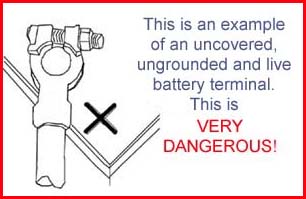 Uncovered, ungrounded and live battery terminals create an electrical hazard. According to CFR 183.420 (b) batteries must be installed so that metallic objects can't come into contact with the ungrounded battery terminals. This is a law.
Uncovered, ungrounded and live battery terminals create an electrical hazard. According to CFR 183.420 (b) batteries must be installed so that metallic objects can't come into contact with the ungrounded battery terminals. This is a law.
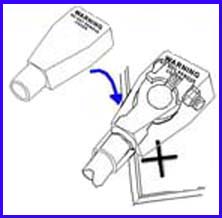
VTE, Inc., offers a safe and inexpensive solution to keep your company in compliance with this law. When installed properly, our caps provide protection from electrical hazards.
Conductive vs. Fastening Nuts View
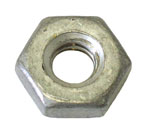
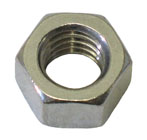 What are my material options? View
What are my material options? View
Click Here to see comprehensive material properties.
Define the term 'Barrel' View
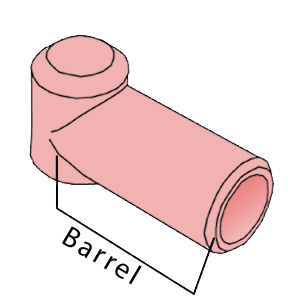 Where do I get the measurement for the cap's diameter? View
Where do I get the measurement for the cap's diameter? View
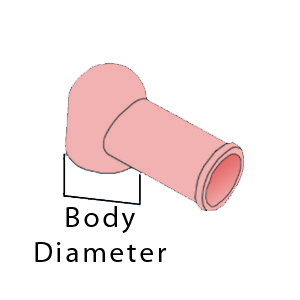
The diameter of the portion of the cap that fits over the terminal and post.
What does the phrase 'Cable Entry Size' mean? View
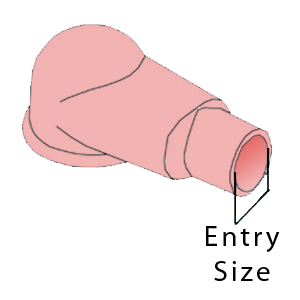
Cable Entry Size: Where the cable enters the cap.
How to determine right or left side cable entry View
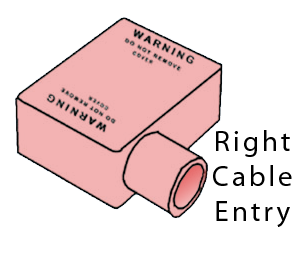
1) Position insulator so terminal opening is facing down.
What is a ring or eyelet terminal? View
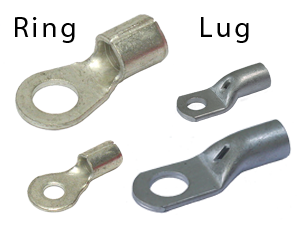
Ring Terminals often are brazed, with open end.
What is the post height? View
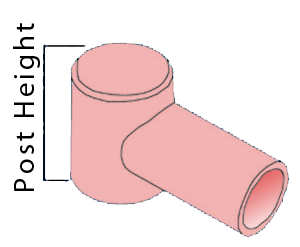
Post Height: the height of the stud / post / screw that must be covered.
How to find terminal length? View
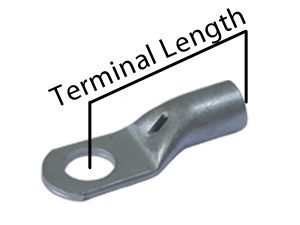
Find the terminal length by measuring from the center of the terminal ring and the end of the exposed metal.
What is the term 'Terminal O.D.' refer to? View
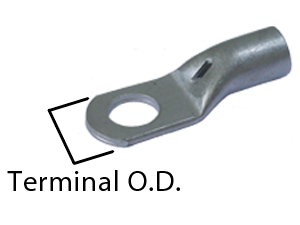
Terminal O.D. (outside diameter) refers to the width of the terminal or eyelet ring.
Do VTE Insulators have a shelf life? View
VTE, Inc., offers a safe and inexpensive solution to keep your company in compliance with this law. When installed properly, our caps provide protection from electrical hazards.

Conductive Fasteners (nuts)
Brass or plated brass nuts are used when a fastener is to be used in a conductive position. These conductive fasteners pass current more efficiently than steel. These nuts will be indicated by a 'BLUE DOT' marking, and should be kept in their conductive location.
Tightening Fasteners (nuts)
Stainless steel and steel nuts are used to torque or tighten an assembly. These fasteners are in a position where torque is necessary, but not conductivity. These fasteners are less expensive, thereby lowering the cost of the assembly, while increasing the amount of fastening torque allowed.| Properties | ||||||
|---|---|---|---|---|---|---|
| Material | UL94 Flame Class | Brittleness Temp oC | Service Temp oC | Tensile Strength, PSI | Elongation, % | Tear Strength, PPI |
| V - Vinyl (Standard, Self Extinquishing) |
V-2 | -48 | 105 | 1550 | 400 | 230 |
| F - Vinyl (FR Material, Non-Flammable) |
V-0 | -30 | 105 | 1500 | 350 | 230 |
| T - TPR * (Termoplastic Rubber) |
HB | <-60 | 125 | 1020 | 450 | 131 |
S Material has been discontinued. | ||||||
| * Due to difficulties in molding with T material, not all insulators are available in this material. Please contact VTE Inc. for functional usefulness and availability. | ||||||
Click Here to see comprehensive material properties.

Barrel: part of the insulator cap designed to cover the terminal length of the entering cable or wire.

The diameter of the portion of the cap that fits over the terminal and post.
The inside diameter of the cap's body should match the outer diameter of the terminal and post.

Cable Entry Size: Where the cable enters the cap.
To size, use the inner diameter of the entrance of the cap's barrel.

1) Position insulator so terminal opening is facing down.
2) Position insulator so cable entry is near you.
3) Cable opening determines cable entry side.

Ring Terminals often are brazed, with open end.
Lug terminals often are closed end, drawn from copper tube.
Both ring and lug terminals are considered eyelet terminals.

Post Height: the height of the stud / post / screw that must be covered.
Use the body of the cap's height for measurement.

Find the terminal length by measuring from the center of the terminal ring and the end of the exposed metal.
Use this measurement to determine the cap's barrel length.


 United States
United States 